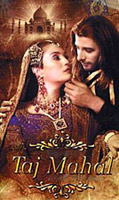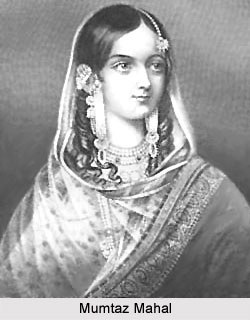 Mumtaz Mahal was the most beloved queen of Shah Jahan. Mumtaz Mahal was originally known as Arjumand Banu Begum. She was truly the soul mate of the emperor. Whether it was the prayer halls, the battlefields, the pleasure gardens, the river banks or court meetings, Mumtaz Mahal was always present with her husband. She was his friend, confidante, philosopher, companion, wife, inspiration, strength and guide. In true sense they shared their life with each other. She was married to Shah Jahan in 1612 A.D, and gave birth to fourteen children. Mumtaz Mahal remained a loyal wife to her husband in his pleasures as well as sufferings. She was a well-educated, cultured and generous lady.
Mumtaz Mahal was the most beloved queen of Shah Jahan. Mumtaz Mahal was originally known as Arjumand Banu Begum. She was truly the soul mate of the emperor. Whether it was the prayer halls, the battlefields, the pleasure gardens, the river banks or court meetings, Mumtaz Mahal was always present with her husband. She was his friend, confidante, philosopher, companion, wife, inspiration, strength and guide. In true sense they shared their life with each other. She was married to Shah Jahan in 1612 A.D, and gave birth to fourteen children. Mumtaz Mahal remained a loyal wife to her husband in his pleasures as well as sufferings. She was a well-educated, cultured and generous lady.
It was in the memory of this beautiful lady that the Mughal emperor Shah Jahan had built Taj Mahal. The monument is a saga of love that has been remarkably etched out of pristine white marble.
Early life of Mumtaz Mahal
Mumtaz Mahal was born in a Persian noble family in Agra, as the daughter of Abdul Hasan Asaf Khan. She was also the niece of Queen Nur Jahan, wife of Jahangir. Her father, Asaf Khan, who rose to eminence in the state, brought her up with utmost care and affection. She was very religious as a Shia Muslim.
Marriage of Mumtaz Mahal
 Mumtaz Mahal was married to Prince Khurram, who later became Mughal Emperor Shah Jahan. She was married at the young age of 19, in the year 1612, although they were engaged in 1607. Mumtaz was Shah Jahan`s 3rd wife and received the most affection and attention from the emperor. Shah Jahan and Mumtaz Mahal had a very loving and intimate married life with each other.
Mumtaz Mahal was married to Prince Khurram, who later became Mughal Emperor Shah Jahan. She was married at the young age of 19, in the year 1612, although they were engaged in 1607. Mumtaz was Shah Jahan`s 3rd wife and received the most affection and attention from the emperor. Shah Jahan and Mumtaz Mahal had a very loving and intimate married life with each other.
Religious beliefs of Mumtaz Mahal
Besides being loyal to her husband, another virtue of Mumtaz Mahal was that she was a religious minded lady. She observed all religious practices of Islam devotedly. She distributed large sums in charity to the poor, orphans, widows etc. She did not interfere in politics but it is said that her religious views influenced the views of Shah Jahan towards orthodoxy. Mumtaz Mahal is remembered in Indian history as the beloved wife of Mughal emperor Shah Jahan.
Death of Mumtaz Mahal
Mumtaz Mahal died in 1631 while giving birth to their daughter, Gauhara Begum. She died in the battleground of Burhanpur, presently in Madhya Pradesh. She had accompanied Shah Jahan as usual. On her death bed she asked her husband to look after their children, her parents and to build a monument that would remain even after them to tell the tale of their love.
The grief stricken emperor agreed. True to his words the Mughal emperor, Shah Jahan, built the most unique monument in the history of the world, Taj Mahal in Agra. It stood for love, companionship and memories. Apart from the exquisiteness and its architectural grandeur it is the principle that counts. Taj Mahal was built to epitomise and to immortalise the love of Mumtaz Mahal and Shah Jahan.



















